All your questions on baking with almond flour answered here! This instructional article takes the guesswork out of how to bake with almond flour, so you can indulge in low carb treats all year long. Take it from this self-proclaimed Almond Flour Wizard!
I’ve updated this post on how to bake with almond flour, as I’ve got a lot more good information to add!
I’ve been baking with almond flour for more than 8 years now and I have to say, I have gotten pretty good at it. I’ve been called The Keto Baking Queen by many people and it’s a title I’ve earned through many years of trial and error. I am proud of my low carb baking skills, and I find myself improving and growing on almost a daily basis. So I decided it was high time to update this article on How To Bake with Almond Flour so you can benefit from my experience!
Because almond flour is the basis of many of my keto recipes, I am highly comfortable with it. It’s perhaps one of the most versatile of the low carb flours, and works well in low carb cookies, cakes, and breads. It’s great for low carb pie crust too! You just have to know how to treat it, what to look for, and how to adjust if it doesn’t work quite as you expect.
So let’s get started. Answering your burning questions about baking with almond flour, right here, right now.
Almond Meal vs. Almond Flour – What’s the difference?
Let’s clear up any misconceptions right now that all almond flour is created equal. I get this question a lot, and the answer is a resounding NO! Sure, they are both made from ground almonds, but anything that calls itself almond “flour” should be finely enough ground that you can make fine-textured cakes and bread that rival their wheat-based counterparts.
It should also be blanched almond flour, so that you get no little dark bits of skin. There are several really good brands of finely ground almond flour, including Honeyville, WellBee, and Anthony’s. My favourite is Bob’s Red Mill Super Fine Blanched Almond Flour. Costco also sells good almond flour at a reasonable price, under their Kirkland brand, which I believe it actually produced by Honeyville.
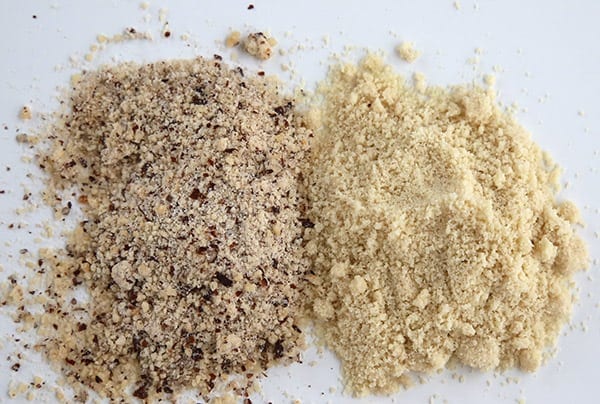
Almond meal is much more coarsely ground and if you place the two side by side, you can really see the difference. It’s still often good enough for baked goods where texture doesn’t matter quite as much, like low carb muffins or crackers. It can be both blanched (skins removed) and un-blanched (skins left on). And since it’s often less expensive, it may be preferable to almond flour at times. You don’t even have to buy almond meal, you can make it yourself if you have a good food processor.
So, if you’ve ever made an almond flour recipe and had issues with the final product holding together, leaching out the oils or butter, or not rising properly and holding its shape, a likely culprit is that you are using the coarser almond meal, instead of almond flour. The larger particles mean less cohesiveness for the finished product. For some things, it may not matter but for cakes and fine-textured items, it most certainly does. I don’t even keep almond meal around anymore, I use almond flour for everything.
Subbing Almond Flour for Wheat Flour
You’re going to hate me for saying this, but there is no easy formula here. It all depends on what you are trying to make. Cookies are dense and crunchy whereas cakes should be light and fluffy, and they are going to take very different ratios of almond flour to other ingredients.
I wish I could tell you it was as simple as swapping almond flour for wheat flour at a 1:1 ratio. But it’s not and when you think about it, you can see why. Almond flour is basically ground nuts, full of fat and moisture, entirely without gluten and not nearly as powdery, fine and dry as wheat flour. So there are a whole range of factors you need to account for when adapting a wheat-based recipe to low carb and gluten-free. You need to consider the texture, density, and moisture content of the baked good you want to make over.
A cup of almond flour also differs significantly in weight from a cup of wheat flour. Out of curiosity, I just went and measured the two (literally right now, as I am writing this) and a cup of wheat flour came to 5 oz, while a cup of Bob’s Red Mill blanched almond flour came to 3.75 oz. That’s more than a full ounce difference!
If you are a total beginner with almond flour, I’d actually suggest you stick to some tried and true recipes to get a feel for how it behaves and the overall proportions. That’s certainly how I started, 2 and 1/2 years ago. Once you have a good sense for almond flour recipes, you will find it easier to strike out on your own and adapt some family favourites.
Let me tell you what I do, when I start making over a recipe. Take, for example, my Almond Crusted Butter Cake. The original wheat-based recipe took about 50% more butter and 50% less flour. Knowing that almond flour has a higher fat content but is less dense than wheat flour, I basically switched this ratio around. Then I doubled the baking powder and added in whey protein to make up for the lack of gluten and to give the end result more structure. Then I crossed my finger, said a little prayer, and popped it in the oven. And it has since become one of my all-time favourite keto cake recipes!
You can also increase the eggs for more protein and structure, but too many eggs can give the final result a rubbery texture or make it too “wet” and gummy in the center. I usually start with one more egg, and then add another closer to the end if the batter seems too heavy and thick.
One important thing to note when adapting wheat flour recipes is that your almond flour batter will almost always be thicker. Don’t expect it to look exactly like a wheat-based batter and resist the urge to thin it out with liquids, or you will likely end up with a soggy mess.
Other Nut Flours and Meals
People often ask me if they can use other nut flours and meals instead. I give the answer to this question as a tentative “yes”, with several caveats.
First off, I don’t know of too many other nut “flours” that are as finely ground as true blanched almond flour, so if texture and consistency of the end result is dependent on the grind, then you may have some difficulty. Some keto muffins, scone and cookie recipes lend themselves admirably to a simple swap of one nut flour/meal for another. Several of my biscotti recipes could be made with hazelnut meal instead of almond flour, as could some cracker and cookie recipes. And my Hazelnut Chocolate Chip Bundt Cake could easily be made with another nut meal of choice (walnut, almond, pecan…all of those would do well).
But finer cakes and cupcakes might become too crumbly, to coarse and possibly leach out oil during baking if you attempt it with anything but the most finely ground flours. If you want a fine crumb on your cake so that no one can guess it’s low carb, then you want finely ground almond flour.
Sunflower Seed Flour
This is, in my opinion, the best nut-free substitute for almond flour, because it can be ground quite finely. You can even make your own sunflower seed flour easily at home. Check out How To Make Sunflower Seed Flour here.
The funny thing about sunflower seed flour, though, is how it can turn green when it’s baked. This is a reaction with the leavening agents like baking powder and baking soda and it doesn’t mean the baked good has gone bad. To offset this reaction, you need about 1 tablespoon of acid like apple cider vinegar or lemon juice. In chocolate recipes, the brown colour covers the green and you don’t really need to worry about it.
Coconut Flour vs. Almond Flour
Inevitably when I make a keto recipe with almond flour, someone comes along and asks if they can make it with coconut flour. And vice versa. Here’s the deal:
You cannot sub coconut flour for almond flour as a direct 1:1 substitution. I cannot state this more strongly. Don’t even think about trying it or you will end up with hard, inedible thing that is only good for using as a hockey puck. Check out my article on Baking with Coconut Flour for more information.
Coconut flour is an entirely different creature than any flour based on tree nuts. It’s fine, powdery, dense and soaks up liquids like nobody’s business. It also requires more eggs and sometimes more other “binders” like xanthan gum, to keep the final product together. And you want to use WAY less coconut flour for a recipe than you would almond flour, sometimes as little as 1/3 to 1/4. In essence, if you choose to make a recipe based on almond flour with coconut flour, you will need to restructure the whole thing.
If I were to take one of my basic almond flour recipes and rework it for coconut flour, I would start with about 1/3 the amount of flour, twice the eggs, some xanthan gum, a little more leavening agent like baking powder, and then I would add my liquids like coconut or almond milk last and not all at once. I would add some liquid, work it in and see how thick the batter was, then add a bit more and a bit more until it felt right to me. Again, “right” in this case is likely be a thicker batter than anything wheat-based, so it take some experimenting to get it right.
One good thing about working with coconut flour (and almond flour) is that they don’t contain gluten so over-mixing is usually not an issue. On occasion, I’ve been making a coconut flour recipe and suddenly thought it needs another egg or two. I’ve added it at the very end and had no problems with the end result. In this sense, at least, coconut and almond flours can be very forgiving.
Peanut Flour vs Almond Flour
The best answer I can give you here is: maybe. Peanut flour comes in a variety of forms, including roasted (light and dark), unroasted, partially defatted and full-fat. I ordered some peanut flour once that was essentially just ground peanuts and it did well as a sub for almond flour in several recipes. But the defatted ones are a little bit like coconut flour, they are very fine and powdery and soak up a lot of liquid. So they are going to require some reworking of the basic recipe in some of the same ways as coconut flour, although to a lesser extent.
How to Measure Almond Flour
Always use the scoop and level method, unless the recipe indicates otherwise.
I always simply scoop the almond flour from the bag or the canister, and level it off with a knife or sometimes with my hand. I never try to jam pack my cups to get more almond in there, so all of my recipes will be written assuming you simply measure an unpacked scoop. A well-written recipe should specify if you should pack the ingredients, so assume not if it doesn’t say. Sadly, not all recipes are that well written these days.
Many gluten-free recipes are done by weight, not volume, because gluten-free ingredients can differ significantly by brand. I am making an effort to do this more often now, especially when the recipe is on the tricky side and precise measurements matter. I would suggest investing in a small kitchen scale if you want to be more accurate. I will always give measurements by volume, however, since I want my recipes to be as accessible to as many people as possible. Weight measurements are more accurate overall, but it doesn’t do me any good if the reader doesn’t own a kitchen scale!
How to make Almond Flour Bread
Looking for a firmer bread you can toast and slather with peanut butter? Yeah, me too. Almond flour is by nature moist so if you use it on its own, your end result can be more cake-y than you want it to be.
I find that adding a little bit of a denser flour, like coconut flour or oat fiber, can help stiffen the batter and thus firm up the bread. I used coconut flour successfully in my Low Carb Panini Bread Recipe. The trick is to not increase the other wet ingredients, so the addition of this flour helps dry out the consistency of your bread.
You can also try using a little oat fiber, which is made from the husk, or the “bran” of the grain and not the grain itself. However, it may contain a little gluten so it’s not idea for people with a gluten intolerance.
Many people add psyllium husk to low carb bread recipes as well, which can give it more of a yeast-bread like texture. But depending on the brand of it can also make it gummy and sometimes it has a purplish hue.
Using Protein Powder in Low Carb Baking
Why do I often use whey protein or egg white protein in my keto cakes and other baked goods? It isn’t, as some people think, to get more protein into my diet. I am an unabashed carnivore and consume plenty of protein.
It all comes down to the science of baking. Gluten is a protein and it’s part of what gives wheat-based baked goods structure, allowing them to rise and hold their shape. In gluten-free baking, adding in a dry protein can help make up for this. You can’t just add more egg whites because that will throw off the liquid to dry ratios. But you can easily swap out the whey for your protein powder of choice (hemp, soy, even egg white powder). The results may vary a little depending on the protein content per serving.
Freezing Almond Flour Baked Goods
With only a few exceptions, I would say yes, most almond flour baked goods are indeed freezer-friendly.
I have successfully frozen cakes, muffins, cookies, scones, and even some almond flour pie crust. I usually freeze after baking, and I freeze before I glaze or frost the baked good in question.
However, you can also freeze some unbaked items and then thaw before baking. I’ve done this successfully with almond flour cookies like my Butter Pecan Cookies and Chewy Ginger Cookies. The trick here is to roll them into balls and flash freeze on a cookie sheet. Then you can put them in a container or plastic bag and they can be frozen for months. Thaw fully before baking.
How to Store Almond Flour
I keep my unopened bags of almond flour in my cellar, which is quite cool year round. Once a bag is opened, I transfer half of the almond flour to an airtight container and keep it on my counter. The rest is frozen or refrigerated to keep help it keep. I don’t recommend trying to bake with the almond flour straight out of the freezer. The high moisture and fat content will make it very clumpy and hard to work with.
More Almond Flour Baking Tips
- Let your almond flour baked goods cool completely. My friends, I can’t emphasize this enough.It can be tempting to start cutting them up soon after they are baked, but try to resist or you may wind up with a heap of crumbs. The texture and cohesiveness of low carb baked goods always improves upon cooling and sitting. Crackers, cookies and tart crusts will crisp up better and breads and muffins will hold together better when left to sit for an hour or two.
- Room temperature ingredients. Make sure your eggs, butter, and cream or almond milk are at room temperature, unless otherwise specified by the recipe. If they are cold, your batter will clump up.
- Grease that pan well! Low carb goodies can stick more than conventional ones, so really work that butter or oil into the corners of your pan.
- Watch it carefully. Almond flour baked goods can also brown more quickly than wheat flour recipes. If I am adapting a wheat-flour recipe, I almost always lower my oven temperature by 25 degrees F, and I watch it carefully. If the top and sides are browning too quickly, I cover the pan with aluminum foil.
- Baking times are only a guide. Oven temperatures can vary tremendously so please only ever use baking times as a rough guideline. What takes 20 minutes in my oven may take 25 in yours. Or yours may be done faster. You should always set your timer for 5 minutes LESS than the baking time says, and then check on it every 5 minutes after that.
Ready to become an almond flour baking expert?
I hope that helped answer some of your most pressing almond flour baking questions. If you can think of anything I didn’t cover here, or you have some tips of your own you’d like to share, please leave a comment or send me an email. I’d be more than happy to update this little (long) treatise to cover more ground!
Free Bonus: Secrets to Keto Baking!
Sign up for your favorite recipes delivered straight to your inbox plus get our FREE bonus: Secrets to Keto Baking!
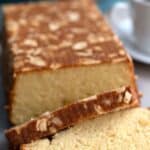
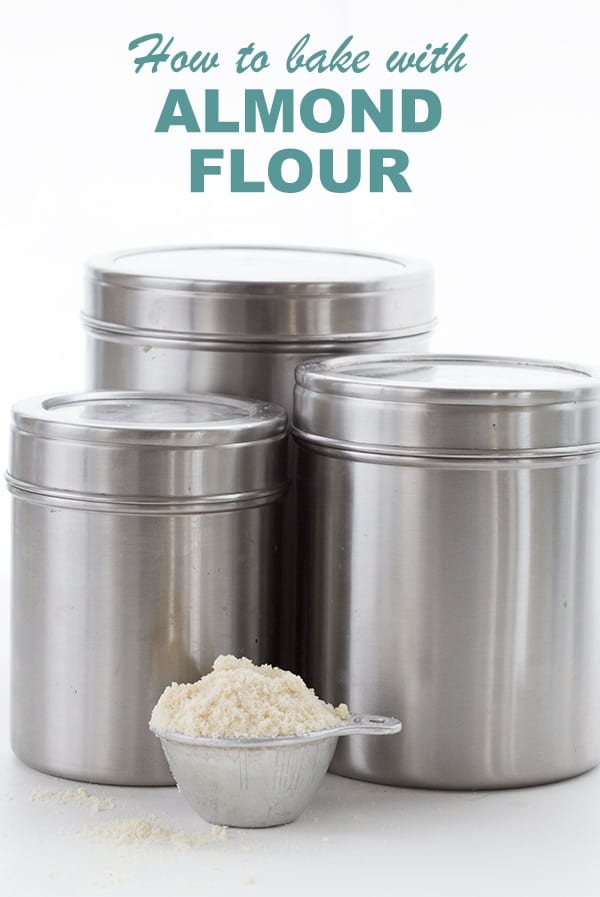
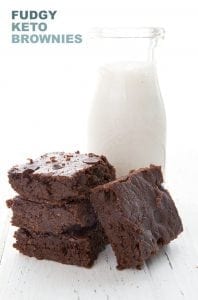
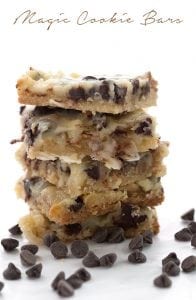
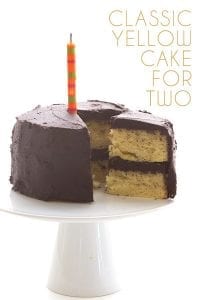
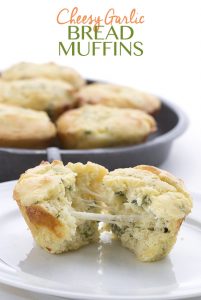
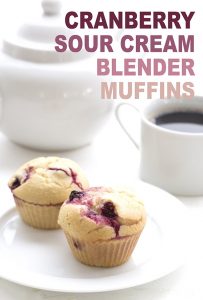
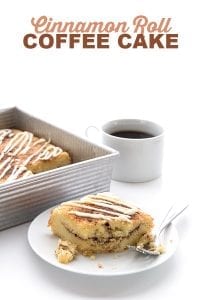
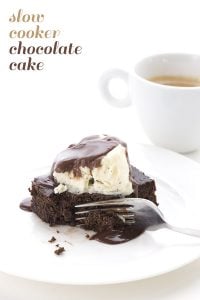
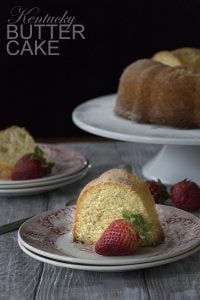
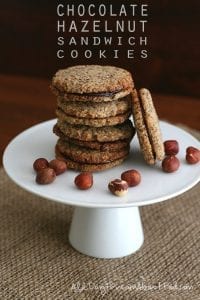

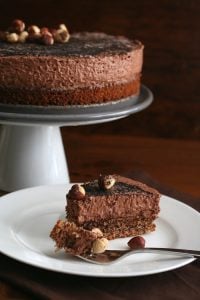
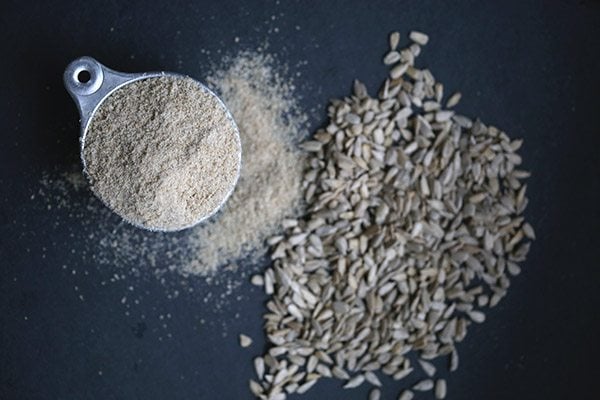
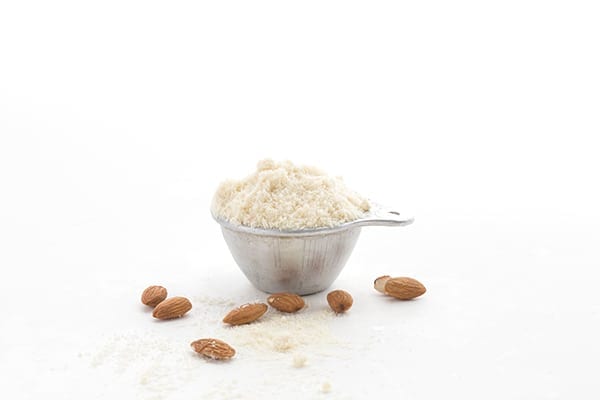
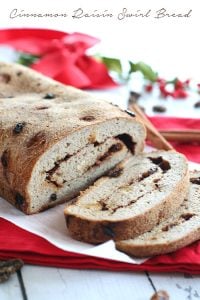
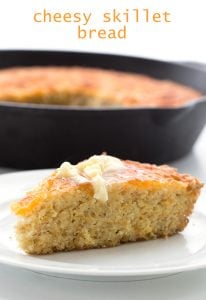
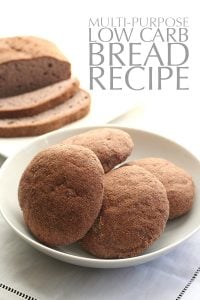
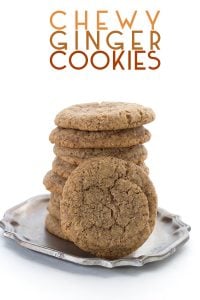
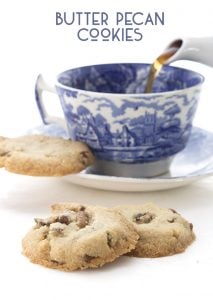

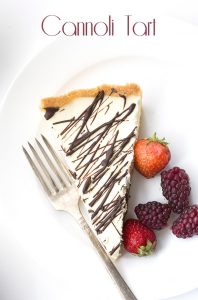
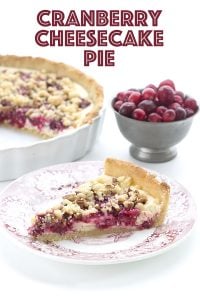
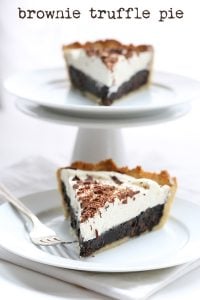
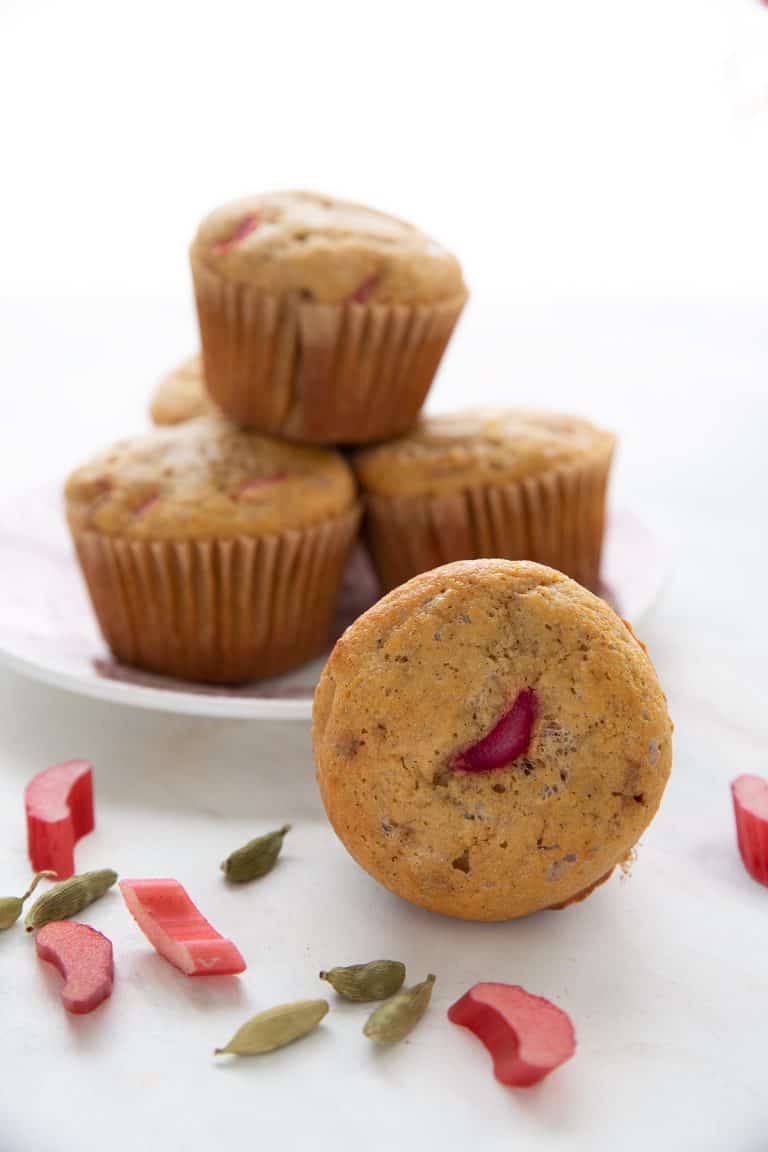
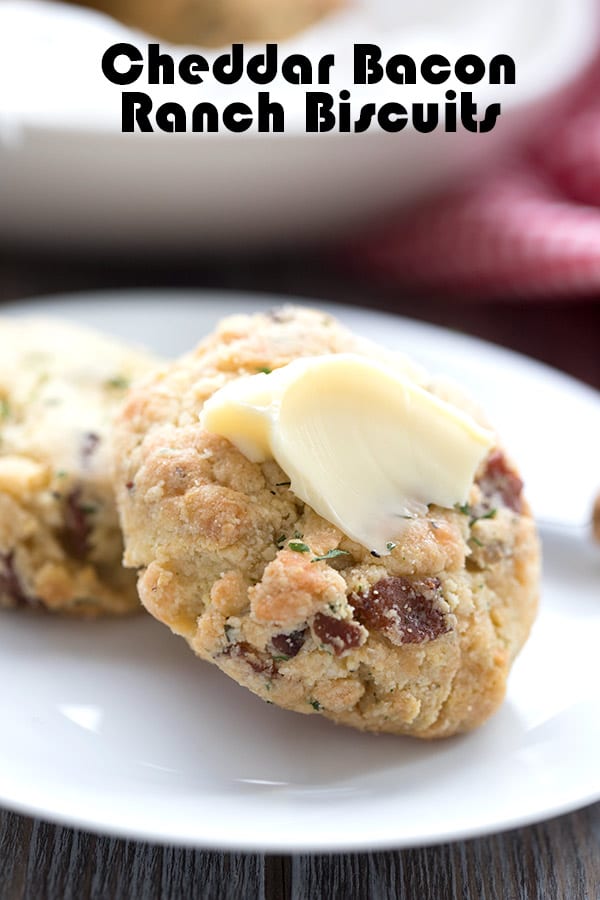
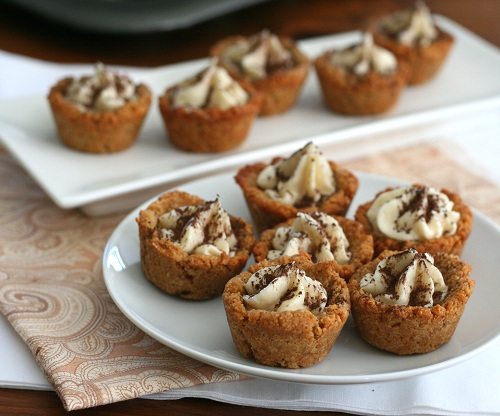
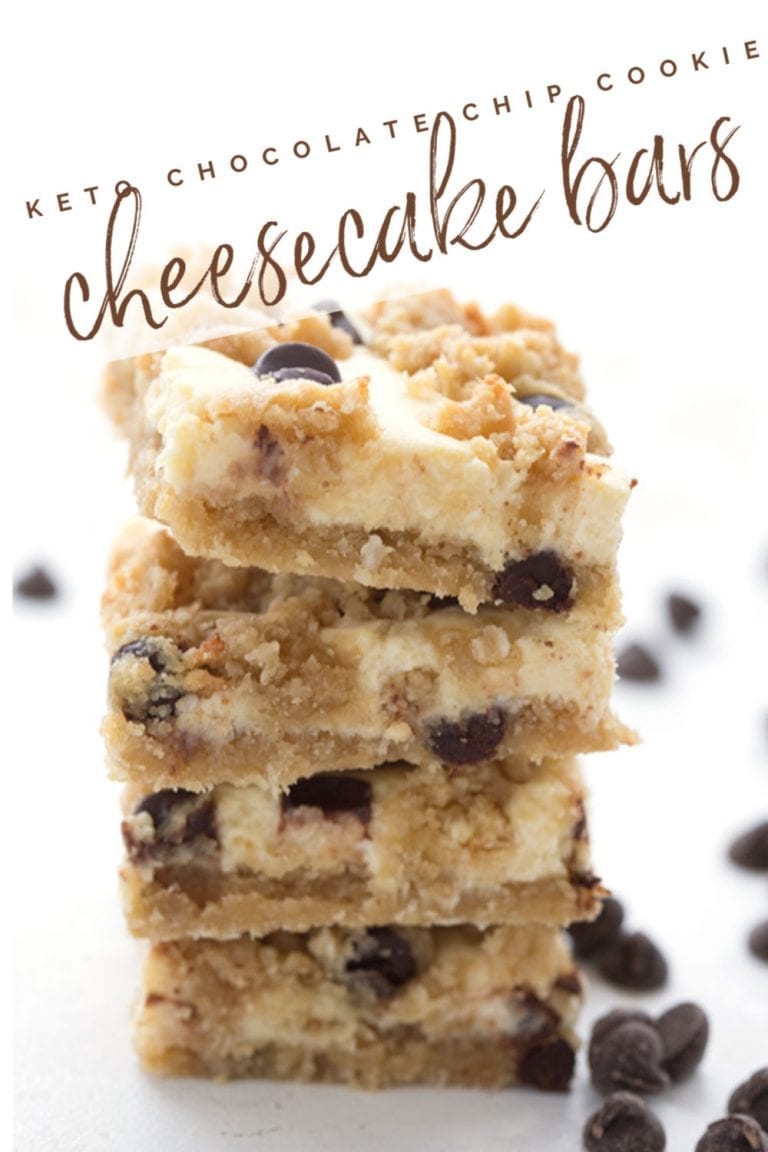
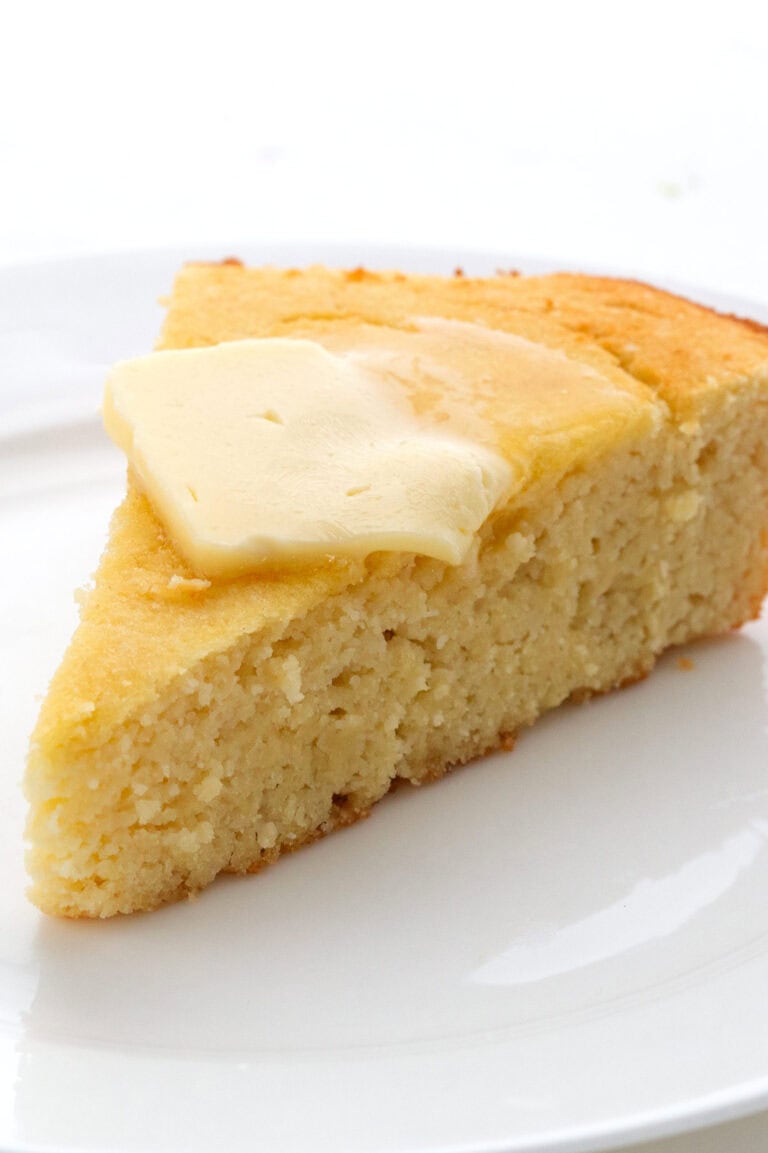
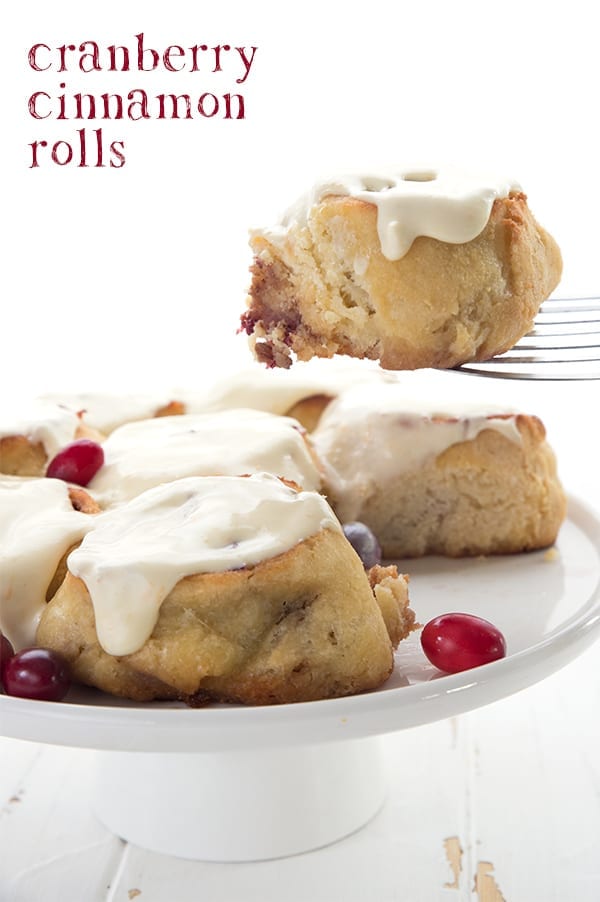









Hi planning to bake a paleo cake using almond flour, I need the texture to be similar to sponge cake (light n fluffy yet firm enough to frost it). Would it be possible to replace the cake flour to almond flour (1:1) or need to add some arrowroot flour? The recipe requires baking powder, can I add the same amount of baking powder or increase the amount of baking powder if I use almond flour? Pls advise thanks
No, it’s never possible to replace cake flour with almond flour 1:1. Please use one of my MANY cake recipes and follow the amounts and instructions there. You can use a paleo sweetener like coconut sugar, but if you use honey, you will need to reduce the liquids.
I can’t thnak you enough for the great article!! I have been using bob’s Red Mill but will be trying other brands also to gauge the difference in baking cakes!
I have been absolutely loving all your recipes!!
Am I reading the Almond Meal paragraph #3 (under the picture of the meal vs flour) that blanched meal has the dark hull bits and the unblanched was the husks removed?
Sorry, that’s a typo. Blanched is the white kind, no skins or hulls.
I am very new to almond flour substitution. I began eating Keto about 6 weeks ago and I am just now beginning to attempt converting some of my favorite family recipes using almond flour. I would like to know if there is a formula for adding zantham gum to almond flour as a direct substitute for wheat flour? I would like to attempt making some Indian Fry Bread, but my recipe is very simplified and I’m not sure where to start for adding zantham gum to my recipe to get a close consistency for the original recipe. Any suggestions would be helpful! Thank you in advance.
As I state in the article, there simply is no direct substitute for wheat flour.
What is Lentil
I’m new at using Almond Flour. I need to make Cornbread with Jalapeños and Onions for a Vegan Chili Cook Off on February 8th. In order for it to be right how much Almond Flour should I use??
Please search my blog for cornbread, you will find a good recipe.
Hi,
I am wondering if you might have some tips for high altitude baking in general, using very fine almond flour. I am at 7,000 feet. Thank you!
I’ve honestly never baked at high altitude but my understanding is that it’s similar to adjusting for conventional baking. But I did find this that might help. https://gfjules.com/high-altitude-gluten-free-baking-tips/
Hi! You sure know a lot about almond flour so I will consider you the expert for my question! I make a specialized chocolate chip cookie dough product that is wildly popular. Because of concerns about E. coli in raw flours such as Gold Medal and Pillsbury, it is recommended that I bake my flour for 10 minutes to destroy any potential bacteria. Therefore I do this religiously when making my cookie dough for raw consumption. I am trying to produce a gluten-free cookie dough for raw consumption and I am wondering if you suggest that it would be necessary to do the same with blanched almond flour. Since the almond flour is actually very finely ground nuts, I’m not sure whether it would be required. Any thoughts? Thanks!
I don’t know that I am the right person to ask about a food safety issue like this. I consume raw almond flour (and raw nuts) frequently but that doesn’t prove much!
Good morning,
I find that most almond flour baking recipes day that the finished beads, cookies, biscuits etc. should bee stored in an air tight container for a few days. Can you explain why just a few days?
Thanks
Jeff (keto for 13 months now)
If you mean in a container on the counter, then it’s because sugar free recipes like this are more prone to mold, since sugar inhibits mold but other sweeteners do not. But you can often keep them in the fridge for up to a week.
I tried baking some almond bread with psyllium husk powder. I got a container from NOW Foods. I heard their’s was a good brand, and I could get a small container (12oz). I had read it was the secret to making wonderful bread. It was a recipe I found on Pinterest. However, the hot bread had a horrible smell! And it pretty much tasted like it smelled! I’ve never heard anyone else having this problems. Is it just me? Because of that, I hesitate to use it again.
Hard to say why but it could be the psyllium.
Curious about a substitute for the whey protein? I’m allergic to whey — and all dairy and soy.
Egg white protein or hemp protein.
Hi Carolyn,
I was wondering if you could give me some pointers. I’m looking to adapt a family cookie recipe to keto. The cookies are similar to most Viennese Crescent Cookies recipes you see online (similar to this: http://www.kitchme.com/recipes/buttery-viennese-crescent-cookies) – they are short and tend to spread and puff up a bit. They are textured inside because of the hazelnut meal that you make to create them.
What do you think would be a good sub for the AP flour?
Thanks!,
Linda
What a great article.As a chef, the baking was not part of what I personally did so I am now learning about baking with almond flour and coconut flour. Here in Mexico they can be hard to find although Bob’s Red Barn is starting to appear in some “American” stores. I really thank you for all the personal detail you shared, I am sure it will save me from baking a lot of hockey pucks. Hockey is not a big sport here in Puerto Vallarta, Mexico
What an information-packed and well-written post–thank you! I will come back to this one again and again! You’re a low carb rock star, my dear! -G
You reversed the meaning of the terms “blanched” and “unblanched” in your description. Blanched almonds have had the skins removed.
Glad to find this page. I have a big bag of almond flour and want to start doing something with it so I”ll be looking at recipes. I hope there’s one for zucchini bread since that’s in season; if not I”ll use your tips and do some experimenting.
I am not sure what you are seeing but I think you are not reading it right. I used blanched for almond flour and I clearly say: It should also be blanched almond flour, so that you get no little dark bits of skin.
This is probably what Barb is referring to:
In the Almond Meal paragraph, you say, “It can be both blanched (skins left on) and un-blanched (skins removed).”
Ah, thanks! I couldn’t see it… too close to writing it to see the mistakes. That’s why I need editors for my cookbooks! 🙂
Hi Carolyn!
I’ve been trying a handful of your recipes and loving them so far! Thanks so much for posting them 🙂 I am a new baker to almond flours/coconut flours etc. and really appreciate your blog!
I did have a few questions about using baking soda/powder and the science of baking. I noticed that in some chocolate chip cookie recipes you have used baking soda or powder. Why is that? Also, when doing some research about these leavening agents, I read that baking soda always needs an acid to activate it, however in some of your cookie recipes like this (https://alldayidreamaboutfood.com/single-serve-low-carb-chocolate-chip-cookies/) you use baking soda without an acid (like buttermilk, etc). I just made the cookie and saw that it rose significantly and turned out well – how does this additive work within the recipe without an acid?
Thanks again and truly appreciate it!
Hi Lexi. Baking soda in cookies is common because you don’t want them to rise per se, but it helps them puff up a little and it typically browns better than baking powder. That’s why you often see it in cookie recipes with no extra acid to help it rise. Very different than if you were to make a cake!
Got it. Thank you!
Thank you for posting this! It’s helpful and I now know why I have a difficult time with certain recipes. I’m not letting my ingredients get room temperature.
That makes a huge difference. I always kick myself when I am in a hurry and I add cold ingredients. I get clumps of butter in my cakes and then little holes after it’s baked.
Is there a printable version of your info on almind flour? I like to print info out to highlight and study- I retain it much better!
Thank you
Debbie
Great article! Thanks so much! Just wondering if you have ever worked with vital wheat gluten in any almond flour recipes – particularly keto bread.
I used to, but I don’t eat any gluten anymore so I don’t have anything to really say about it.
Thank you so much for explaining how to use this flour. I love all your sweet treats (so does my family). I know when I make one of your recipes, it will be wonderful! Eating keto sweets is not cheap and I know when I make something of yours it won’t go in the trash.
Thanks for such a nice and useful tips …. Please keep sharing your knowledge with us. I will definitely share this post with my friends.